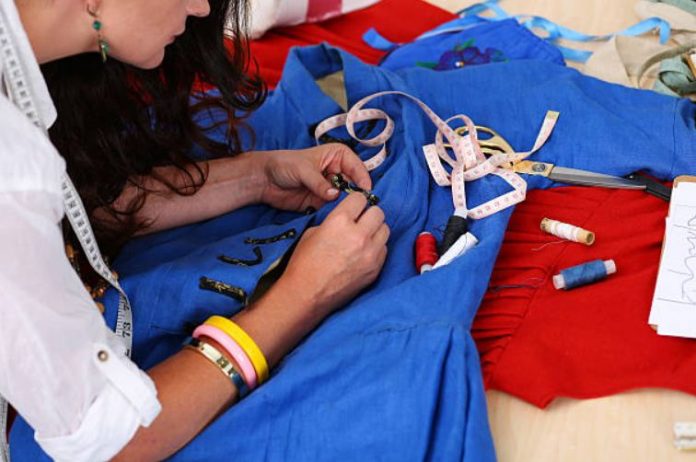Sewing can be a great hobby to learn, but many beginners get easily frustrated with their first project. The thread jams, the seams aren’t straight and their scissors won’t cut.
If, however, you take a little time before your first project to learn a little about the tools and supplies you will be using, you will eliminate most, if not all, of the frustrations common to beginning sewers.
Let’s get started.
– Read the Instruction Manual for Your Sewing Machine
Really. It may sound tedious, but there is so much information about your machine and basic sewing that you need to know. Pay close attention to the following topics – you will be referring to them frequently as you learn to sew: threading your machine, winding the bobbin, thread tension, needle types, using a pressure foot.
– Thread Your Machine
Now thread it again. This can be a frustration to new sewers, so learn how to thread your machine properly and quickly before you begin your first project.
– Wind Your Bobbin
Wind another. In fact, wind as many as you have. In the process, you will learn how to use your bobbin, how to wind it properly and quickly, and you will be more confident if you have threading problems as you begin to sew.
– Investigate Needles
Did you know there are almost as many different types of needles as there are fabrics? Many sewing frustrations will be eliminated by using the proper needle. Most sewing books and your sewing machine manual will have a section on selecting the proper needle.
– Feel Fabrics
Spend an hour in a fabric store and feel the different types of fabrics. Learn about the different textures of denim, silk, cotton, velvet, fleece, and rayon. This experience will help you choose the best fabric for your project, as well as the best needle and thread.
– Get to Know Your Iron
You will need it to press seams, iron-on interfacing, and several other sewing tasks. If you don’t have an iron, this is a good time to start looking for one. It doesn’t need to be fancy, but be sure there are different temperature settings for the various types of fabric.
– Play With Your Presser Feet
Most machines come with 3 or 4 feet, some with many more. Here’s the easiest way to learn – get a piece of fabric. Yes, you are going to sew. Thread your machine, wind the bobbin, pick the correct needle, and open your machine manual to the section on different types of stitches.
Now, fold the fabric in half, and stitch one line of each stitch. Change the pressure foot as needed. After spending an hour or so with this, you will be a pro at picking the correct foot for the stitch you want. You will also learn about thread tension and stitch length in the process.
– Practice Different Seams
Let’s take your sewing skills a little farther – time for some more scrap fabric. In most sewing books and some machine manuals, there is a section on seams. Practice the different types of seams and seam finishes.
Also, start learning which seam type to use on which fabric. Some seams to practice include plain seams, flat-felled seams, and french seams.
You may not think you need to know all these seams right away, but you will also be learning to be more comfortable with your machine as you practice your seams.
– Create a Workspace
You’re almost ready! You’ve mastered the basics of your tools and materials, now its time to get ready to sew. Your workspace must be clean, free from debris, and hard and flat.
The dining room table works great – until its time for dinner. If you work on the floor or good furniture for cutting, you can buy cardboard cutting mats to create a hard, flat surface.
You also need good task lighting. Your machine has a light, but you will need more.
You will also need somewhere to store the pins, scissors, thread, needles, etc. You can use almost anything, but it should be portable so you can move it where you’re working.
– Buy Notions for Your First Project
Now you’re ready for your first project. There are a couple of other items you should purchase at this point. You need a good pair of sewing scissors. They must be able to cut fabric cleanly. Keep your scissors for sewing only.
You need marking pencils and a sewing ruler, and straight pins.
Now, pick your project. Aprons work well, and sometimes you can buy fabric panels with the pattern already printed. Easy skirts are another good choice – but avoid zippers and buttons if you can. Once you pick your project, buy thread and needles for the project.
If you follow these easy steps before you begin your first project, you will be well on your way to a fun, new hobby.

